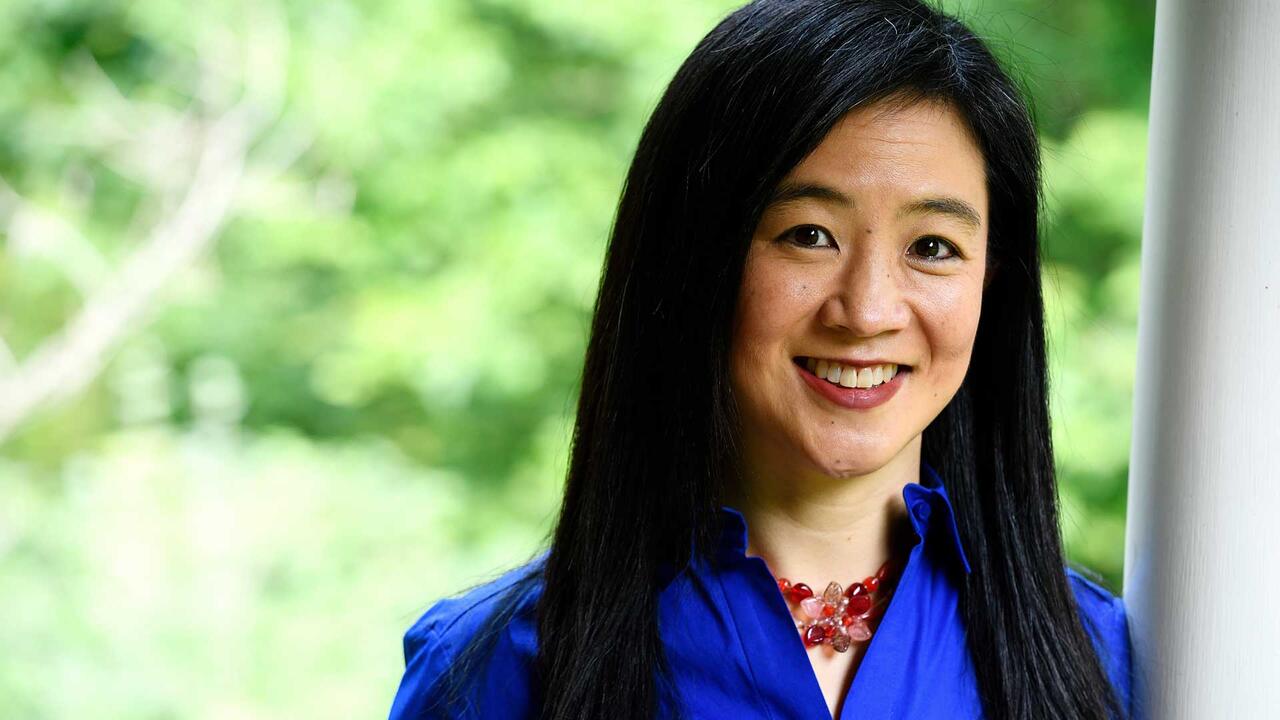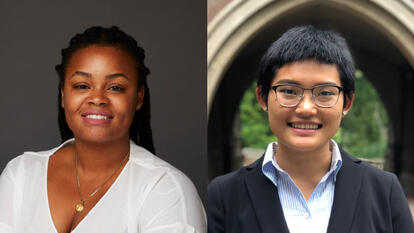
The Strength of Grassroots Movements: A #WellesleyVotes Conversation
National political gridlock gets so much attention that it can be easy to forget political change at the grassroots level is still possible. Hahrie Han, inaugural director of the SNF Agora Institute and faculty director of the P3 Research Lab at Johns Hopkins University, reminds us that change can happen behind the scenes, away from news cameras, on the street, face to face.
Han will join Laura Grattan, Jane Bishop ’51 Associate Professor of Political Science at Wellesley, in a #WellesleyVotes virtual event on November 18 to discuss the future of grassroots organizing after the 2020 election. After earning her Ph.D. in political science, Han taught at Wellesley and co-founded the College’s Project on Public Leadership and Action before leaving in 2015 for an opportunity at the University of California, Santa Barbara.
Both Han and Grattan describe community organizing as transformative. “[A]s a child of immigrants you learn that transformation is not only possible, but it’s a way of life,” said Han, whose parents are from Korea. “That’s what immigrants do—you try to remake yourself, to remake your family, to remake the world around you. And that’s what organizing is at its heart.”
Grattan said the transformative possibilities of grassroots work became tangible for her as a graduate student in Durham, N.C., working with people from a variety of backgrounds and experiences to pass living wage policies. Gathering in church basements, meeting in people’s homes, being in community, and working toward a common goal “felt like spirituality,” she said.
“Often the work most important is the work most invisible. The steady work that tips a probable loss into a possible win is not the story that gets covered.”
Hahrie Han
At the P3 lab, Han and her colleagues study civic and political engagement, collective action, and organizing. They call it the P3 lab, she said, “because we want to make the participation of ordinary people possible, probable, and powerful. So people have to be able to participate, they have to want to participate, and the work has to actually matter.” The lab partners with grassroots organizations to tackle issues like how to break down barriers to participation, particularly for historically marginalized people, how to pull people off the sidelines and into public life, and then how to channel that participation into political power.
One of the most visible examples of a successful grassroots effort to come out of the 2020 election is the voter registration groundwork Stacey Abrams and other organizers did in Georgia, a state in the process of turning purple, surprising people from both ends of the political spectrum. “They are trying to organize communities that historically have been left out of the political system,” Han said. And they are not only registering people to vote, they are working to get them to show up at the polls. “I think that’s where the relationships they built in communities, especially communities of color, over time really began to pay off,” Han said. Georgia voters surpassed their 2008 record of 3.9 million votes by casting over 4 million votes in the 2020 election.
The media narrative around these kinds of large-scale political shifts tends to erase grassroots organizing. Stories about Georgia, for example, focus on the well-known Abrams, while she tries to bring attention to all the organizers who are part of the effort. Grattan recalled the work of the community organizers in Durham who fought to change the living wage for contract employees. They packed city council meetings, including the one where the council voted to pass the living wage increase. In the newspaper the next day, there was no mention of the organizers’ efforts—only that the council had passed the motion and what the county officials had to say. “Party establishment and the media see politics and see the world, but don’t see community power,” Grattan said. Han agreed. “Often the work most important is the work most invisible,” she said. “The steady work that tips a probable loss into a possible win is not the story that gets covered.”



